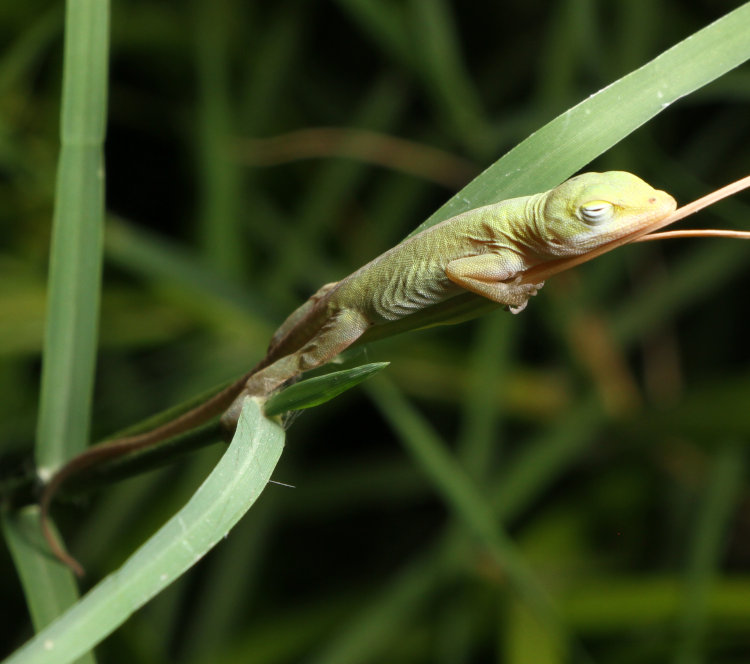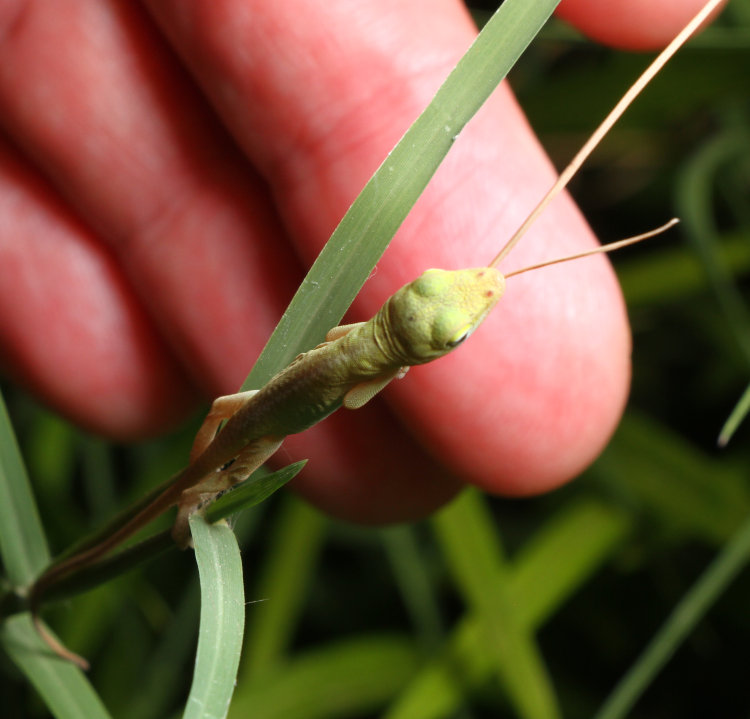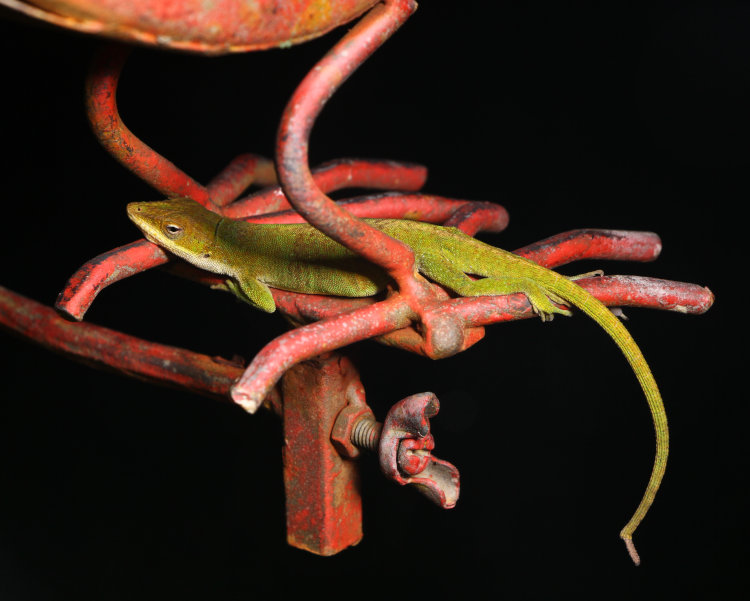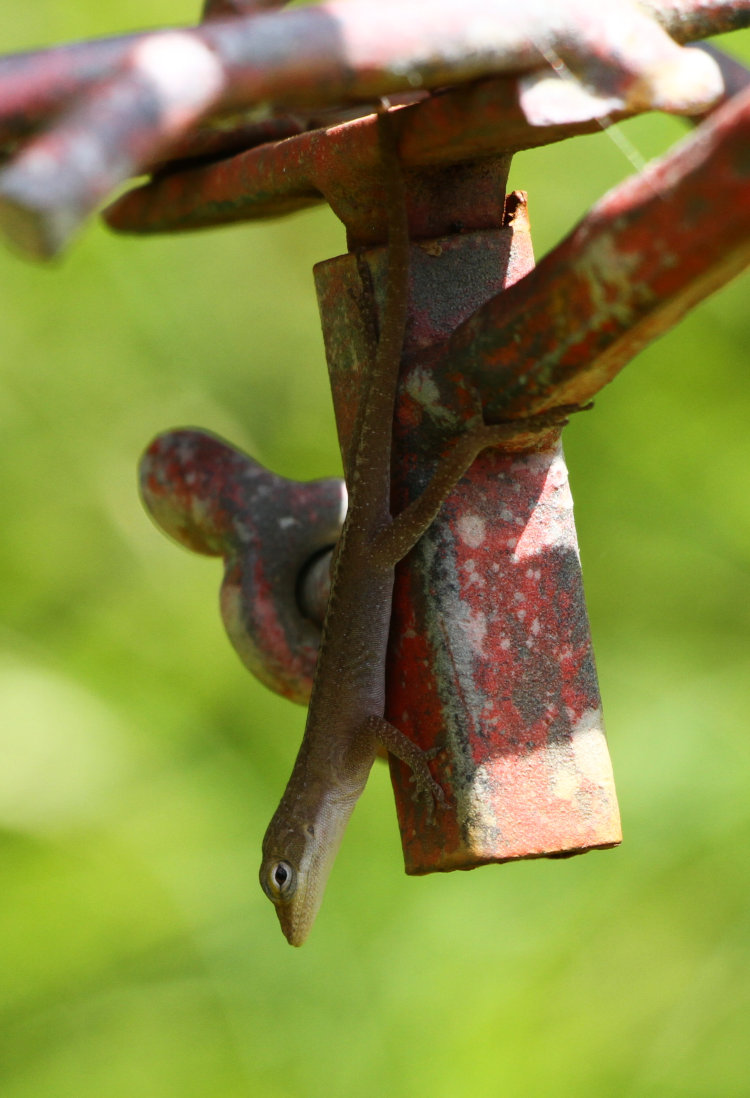I’ve said before that I had my own method of determining the first day of spring, as befits a nature photographer that concentrates more than a little on reptiles and amphibians: the first appearance of a treefrog species. This does make the event somewhat variable, but so what? It certainly fits a lot better than the traditional dates for these things, such as the first day of winter coming well into the arrival of winter temperatures, no matter where you live. But now, I have a new milestone: the first day of summer is heralded by the first appearance of…

… a newborn Carolina anole (Anolis carolinensis,) which seem to appear in late June to early July. Now, having never seen one hatch nor known where a nest was to monitor, I’m not exactly sure just how “newborn” they are, whether they make a public appearance almost immediately or, as I suspect, they spend some time hidden down within the dense ground foliage before they venture out into the open. But going in close like this, while great for detail, completely destroys the true scale of the species at this age, and so I usually try to include something that helps re-establish this, like so:

As long as I didn’t disturb the weed that it was sleeping upon, everything was cool, but occasionally they wake up enough to get suspicious, and then my hand coming this close is enough to send them scurrying for cover, even when there’s too little light for them to see clearly – my little friend here was found with the headlamp but shot with the macro flash rig, so this brilliant light existed for only a fraction of a second.
This one was found only a couple of meters away from the apparent nest spot that we’re aware of from an earlier post, though this was way too soon to be hatched from that/those egg(s). However, we have a little more scale to examine, because that same adult female anole, distinguished by the kink at the tip of her tail, was sleeping very close to this on one of the lawn decorations, a couple nights previously.

We pay attention to that little box structure poking out the bottom, because just this morning, what I’m taking to be the same newborn anole that we opened with was hanging out on the same lawn decoration:

That’s perhaps the best that I’m going to manage to compare the newborn and adult sizes, because I’ve never seen those close together and I think they actually avoid being so close to adults because they might get eaten – protein is protein, and if it’s not the adult’s offspring, then it’s potentially competition for her offspring. I honestly can’t say how anoles view it, but I do know that I’ve never seen one so small anywhere near an adult.
But yes, happy first day of summer, everyone!




















































